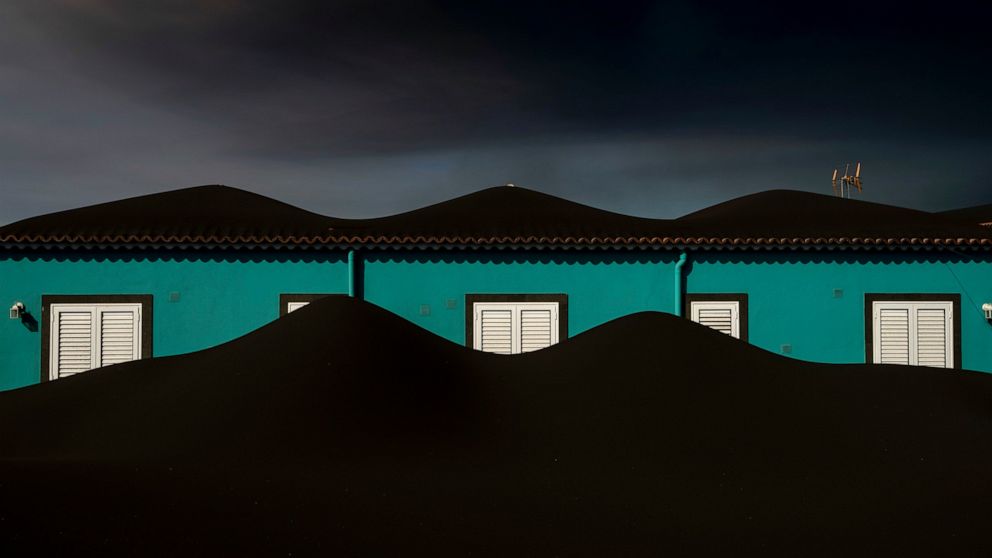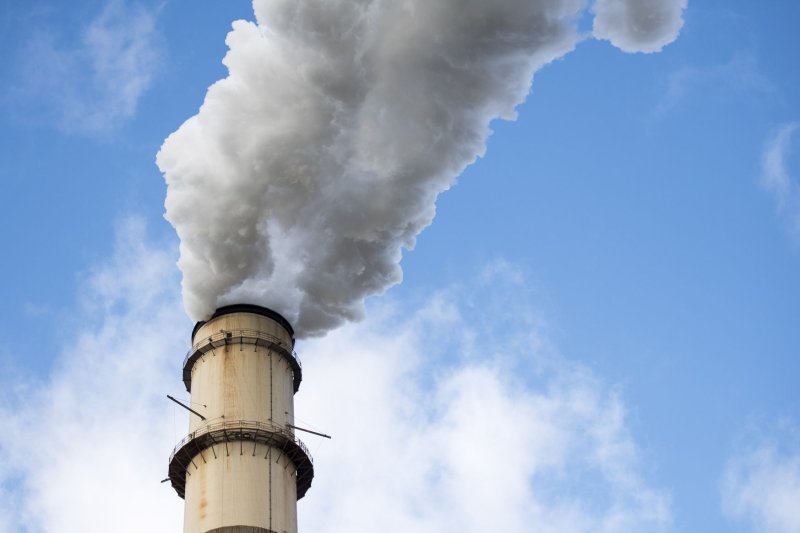END SANCTIONS AGAINST IRAN
A public suicide in Iran spotlights anguish over economyBy NASSER KARIMI

1 of 5
A street vendor waits for customer while selling shoes on the side of a highway in southwestern Tehran, Iran, Tuesday, Nov. 2, 2021. As U.S. sanctions and the coronavirus pandemic wreak havoc on Iran's economy, suicides in the country increased by over 4%, according to a government study cited by the reformist daily Etemad. About 1 million Iranians have lost their jobs, and unemployment has climbed over 10% — a rate that is nearly twice as big among youths. (AP Photo/Vahid Salemi)
TEHRAN, Iran (AP) — Ruhollah Parazideh, a wiry 38-year-old with a thick mustache and hair flecked with gray, was desperate for a job. The father of three in southern Iran walked into a local office of a foundation that helps war veterans and their families, pleading for assistance.
Local media reported that Parazideh told officials he would throw himself off their roof if they couldn’t help. They tried to reason with him, promising a meager loan, but he left unsatisfied.
He soon returned to the gates of the building, poured gasoline over himself, and put a lit match to his neck. He died from his burns two days later, on Oct. 21.
Parazideh’s suicide in the city of Yasuj shocked many in Iran, and not just because he was the son of Golmohammad Parazideh, a prominent provincial hero of the country’s 1980-88 war with Iraq that left hundreds of thousands dead.
It put a spotlight on the rising public fury and frustration as Iran’s economy sinks, unemployment soars and the price of food skyrockets.

His death occurred outside the local office of the Foundation for Martyrs and War-Disabled People, a wealthy and powerful government agency that helps the families of those killed and wounded in Iran’s 1979 Islamic Revolution and subsequent wars.
“I was shocked when I heard the news,” said Mina Ahmadi, a student at Beheshti University north of Tehran. “I thought that the families of (war) victims enjoyed generous support from the government.”
Iran valorizes its war dead from the conflict with Iraq, known in Tehran as the “Sacred Defense,” and the foundation plays a big role in that. After the revolution installed the clerically run system, the foundation began providing pensions, loans, housing, education and even some high-ranking government jobs.
Following Parazideh’s suicide, the foundation fired two of its top provincial officials and demanded the dismissal of the governor’s veteran affairs adviser as well as a social worker, lambasting their failure to send the distressed man to a medical facility or others for help, local media reported.
The fallout reached the highest levels of government. Ayatollah Sharfeddin Malakhosseini, an adviser to Supreme Leader Ayatollah Ali Khamenei, called the case a warning that officials should “get rid of unemployment, poverty and the disruption of social ties.”
In 2014, parliament launched an investigation into one of the main banks affiliated with the foundation for allegedly embezzling $5 million. Its findings were never revealed.
The foundation is known to funnel financial support to Islamic militant organizations in the region, from Hezbollah in Lebanon to Hamas in Gaza, leading the U.S. to sanction it in 2007 for supporting terrorism.
Parazideh’s suicide was one of several in recent years that appear driven by economic hardships.
Self-immolations killed at least two other veterans and injured the wife of a disabled veteran outside branches of the foundation in Tehran, Kermanshah and Qom in recent years.
As the coronavirus pandemic wreaked economic havoc, suicides in Iran increased by over 4%, according to a government study cited by the reformist daily Etemad.
For many in the Middle East, the act of self-immolation — the protest used by a fruit vendor named Mohammed Bouazizi in Tunisia that became a catalyst for the 2011 Arab Spring uprisings — evokes broader discontent with economic woes and the lack of opportunity.
“I don’t know where we are headed because of poverty,” said Reza Hashemi, a literature teacher at a Tehran high school.
In 2018, then-President Donald Trump withdrew America from Tehran’s landmark nuclear agreement with world powers and brought back sanctions on Iran, pummeling an oil-dependent economy already hobbled by inefficiencies. The pandemic has aggravated the economic despair. About 1 million Iranians have lost their jobs, and unemployment has climbed over 10% — a rate that is nearly twice as big among youths.
Capital flight has soared to $30 billion, chasing away foreign investors.
Negotiations to revive the atomic accord stalled in the five months since hard-line President Ebrahim Raisi took office, allowing Tehran to press ahead with its nuclear program. On Wednesday, the European Union announced that talks between world powers and Iran on reviving the deal would resume Nov. 29 in Vienna. The announcement stoked modest hopes that the Biden administration can resuscitate the accord.
“It’s impossible to hide people’s discontent with the economy,” said Mohammad Qassim Osmani, an official at the Audit Organization Services, a government watchdog. “The structure of the country is faulty and sick. We need an economic revolution.”
Iran’s currency, the rial, has shriveled to less than 50% of its value since 2018. Wages haven’t grown to make up the loss, and the Labor Ministry reported that over a third of the population lives in extreme poverty.
“About 40 million people in the country need immediate and instant help,” said lawmaker Hamid Reza Hajbabaei, the head of the parliamentary budget committee, in a televised debate last week — referring to nearly half the population.
The deepening poverty goes beyond just numbers, becoming a visible part of daily life. On Tehran’s streets, more people are seen searching through garbage for something able to be sold. Children sell trinkets and tissues. Panhandlers beg for change at most intersections — a rare sight a decade ago.
Petty theft has surged, testing the already-tough justice system. Last week, a Tehran court sentenced a 45-year-old father of three to 10 months in prison and 40 lashes for pocketing a few packs of peanuts.
Gen. Ali Reza Lotfi, Tehran’s chief police detective, blamed the economy for the spike in crime, noting that over half of all detainees last year were first-time offenders.
It has fallen to Raisi to handle the economic pressures. He frequently repeats campaign promises to create 1 million jobs through construction and tourism projects.
But many low-wage workers, bearing the brunt of Iran’s crisis, have no hope.
Last month, in another case that drew huge attention, a 32-year-old teacher facing crushing debt hanged himself in the southern city of Guerash after a bank rejecting his request for a $200 loan.
___
Associated Press writer Isabel DeBre in Dubai, United Arab Emirates, contributed to this report.
TEHRAN, Iran (AP) — Ruhollah Parazideh, a wiry 38-year-old with a thick mustache and hair flecked with gray, was desperate for a job. The father of three in southern Iran walked into a local office of a foundation that helps war veterans and their families, pleading for assistance.
Local media reported that Parazideh told officials he would throw himself off their roof if they couldn’t help. They tried to reason with him, promising a meager loan, but he left unsatisfied.
He soon returned to the gates of the building, poured gasoline over himself, and put a lit match to his neck. He died from his burns two days later, on Oct. 21.
Parazideh’s suicide in the city of Yasuj shocked many in Iran, and not just because he was the son of Golmohammad Parazideh, a prominent provincial hero of the country’s 1980-88 war with Iraq that left hundreds of thousands dead.
It put a spotlight on the rising public fury and frustration as Iran’s economy sinks, unemployment soars and the price of food skyrockets.

His death occurred outside the local office of the Foundation for Martyrs and War-Disabled People, a wealthy and powerful government agency that helps the families of those killed and wounded in Iran’s 1979 Islamic Revolution and subsequent wars.
“I was shocked when I heard the news,” said Mina Ahmadi, a student at Beheshti University north of Tehran. “I thought that the families of (war) victims enjoyed generous support from the government.”
Iran valorizes its war dead from the conflict with Iraq, known in Tehran as the “Sacred Defense,” and the foundation plays a big role in that. After the revolution installed the clerically run system, the foundation began providing pensions, loans, housing, education and even some high-ranking government jobs.
Following Parazideh’s suicide, the foundation fired two of its top provincial officials and demanded the dismissal of the governor’s veteran affairs adviser as well as a social worker, lambasting their failure to send the distressed man to a medical facility or others for help, local media reported.
The fallout reached the highest levels of government. Ayatollah Sharfeddin Malakhosseini, an adviser to Supreme Leader Ayatollah Ali Khamenei, called the case a warning that officials should “get rid of unemployment, poverty and the disruption of social ties.”
In 2014, parliament launched an investigation into one of the main banks affiliated with the foundation for allegedly embezzling $5 million. Its findings were never revealed.
The foundation is known to funnel financial support to Islamic militant organizations in the region, from Hezbollah in Lebanon to Hamas in Gaza, leading the U.S. to sanction it in 2007 for supporting terrorism.
Parazideh’s suicide was one of several in recent years that appear driven by economic hardships.
Self-immolations killed at least two other veterans and injured the wife of a disabled veteran outside branches of the foundation in Tehran, Kermanshah and Qom in recent years.
As the coronavirus pandemic wreaked economic havoc, suicides in Iran increased by over 4%, according to a government study cited by the reformist daily Etemad.
For many in the Middle East, the act of self-immolation — the protest used by a fruit vendor named Mohammed Bouazizi in Tunisia that became a catalyst for the 2011 Arab Spring uprisings — evokes broader discontent with economic woes and the lack of opportunity.
“I don’t know where we are headed because of poverty,” said Reza Hashemi, a literature teacher at a Tehran high school.
In 2018, then-President Donald Trump withdrew America from Tehran’s landmark nuclear agreement with world powers and brought back sanctions on Iran, pummeling an oil-dependent economy already hobbled by inefficiencies. The pandemic has aggravated the economic despair. About 1 million Iranians have lost their jobs, and unemployment has climbed over 10% — a rate that is nearly twice as big among youths.
Capital flight has soared to $30 billion, chasing away foreign investors.
Negotiations to revive the atomic accord stalled in the five months since hard-line President Ebrahim Raisi took office, allowing Tehran to press ahead with its nuclear program. On Wednesday, the European Union announced that talks between world powers and Iran on reviving the deal would resume Nov. 29 in Vienna. The announcement stoked modest hopes that the Biden administration can resuscitate the accord.
“It’s impossible to hide people’s discontent with the economy,” said Mohammad Qassim Osmani, an official at the Audit Organization Services, a government watchdog. “The structure of the country is faulty and sick. We need an economic revolution.”
Iran’s currency, the rial, has shriveled to less than 50% of its value since 2018. Wages haven’t grown to make up the loss, and the Labor Ministry reported that over a third of the population lives in extreme poverty.
“About 40 million people in the country need immediate and instant help,” said lawmaker Hamid Reza Hajbabaei, the head of the parliamentary budget committee, in a televised debate last week — referring to nearly half the population.
The deepening poverty goes beyond just numbers, becoming a visible part of daily life. On Tehran’s streets, more people are seen searching through garbage for something able to be sold. Children sell trinkets and tissues. Panhandlers beg for change at most intersections — a rare sight a decade ago.
Petty theft has surged, testing the already-tough justice system. Last week, a Tehran court sentenced a 45-year-old father of three to 10 months in prison and 40 lashes for pocketing a few packs of peanuts.
Gen. Ali Reza Lotfi, Tehran’s chief police detective, blamed the economy for the spike in crime, noting that over half of all detainees last year were first-time offenders.
It has fallen to Raisi to handle the economic pressures. He frequently repeats campaign promises to create 1 million jobs through construction and tourism projects.
But many low-wage workers, bearing the brunt of Iran’s crisis, have no hope.
Last month, in another case that drew huge attention, a 32-year-old teacher facing crushing debt hanged himself in the southern city of Guerash after a bank rejecting his request for a $200 loan.
___
Associated Press writer Isabel DeBre in Dubai, United Arab Emirates, contributed to this report.

























